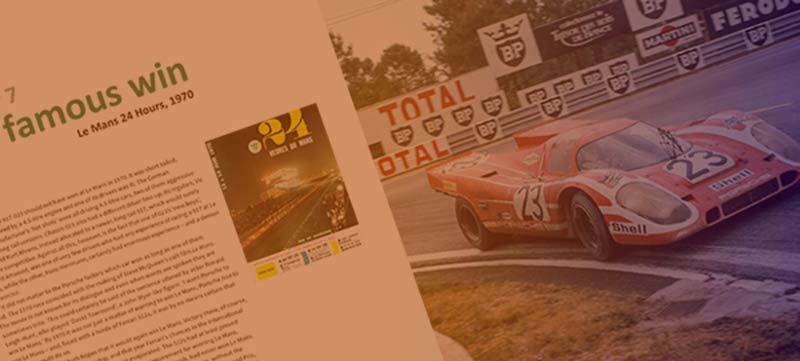
The Supersonic styling that put an Italian coachbuilder in the spotlight

Crashing and burning during its competition debut on the 1953 Mille Miglia road race might easily have been the end of the Italian GT nicknamed ‘Supersonic’, but the flames of that accident consumed a body so beautiful it had to be recreated. A further 18 futuristic-looking Supersonic-bodied replicas were constructed after the original burned-out, wowing the crowds at motor shows and making their Turin-based coachbuilder famous.

That coachbuilder was Ghia, who not long before going Supersonic had been manufacturing such humdrum products as pots and pans in a post-war struggle for survival. Ghia’s factory was reduced to rubble by allied bombs in 1943 and, while supervising reconstruction of his company’s premises the following year, Giacinto Ghia had died of heart failure. But Ghia’s name lived on, and one of his legacies was streamlining. It was Ghia’s carrozzeria, for example, which had created the Fiat 508 CS Berlinetta Aerodinamica, an Art Deco gem living up to its name with wind-cheating good looks.
That pretty little Fiat was the creation of Ghia’s pre-war freelance stylist, Count Mario Revelli di Beaumont, a former motorcycle racer whose belief in streamlining was evangelical. It’s not difficult to imagine how, with his head tucked down behind his motorbike’s handlebars and his knees pulled in tight to the frame, di Beaumont came to wish he could eliminate wind resistance. But stylists’ dreams are no more than that without funds to make them real, and as cash-strapped Europe recovered from war in the early ‘50s the Count left Italy to work with General Motors in Detroit. Ghia, too, headed to Detroit, to snuggle up with Chrysler Corporation. Ghia’s Turin studio worked closely with Chrysler on shaping a series of ‘Idea Cars’ to shatter the American corporation’s reputation for dowdiness.
This US foray was the initiative of Luigi ‘Gigi’ Segre, the former sales manager at Ghia who by 1953 had assumed control of the business. It was Segre who opened Ghia’s door to Giovanni Savonuzzi, the stylist and designer whose talents had shone brightly at Cisitalia. Savonuzzi brought on board Virgilio Conrero, the former aircraft engineer whose ability to extract improbably large numbers of horses from small car engines made him known as 'Il Mago', 'The Magician'. And between them, Savonuzzi and Conrero certainly worked magic: the first Ghia-built GT with coachwork, retrospectively labelled ‘Supersonic’, was conjured up from a relatively humble Alfa Romeo 1900 and its 95bhp inline four-cylinder engine tuned to give 130bhp. This was the car, christened Conrero 1900 Coupé Ghia, which crashed and burned on the ’53 Mille Miglia, but not before being captured in photographs, which would be published to gasps of admiration.

Fortunately, this flourish of Jet Age styling wasn’t allowed to die so young. After the Alfa, Ghia also bestowed Supersonic bodies on the chassis and running gear of Fiat’s 8V, Jaguar’s XK 120 and Aston Martin’s DB2/4. All were hailed as handsome and some were conspicuously driven by the rich and famous. One was even given away as a wedding present, to American socialite and heiress Gail Whitney Vanderbilt. But it’s fair to say that not all these cars went to old money. The first of the XK 120-based Supersonics, for example, was sold new to a Monsieur Malpelli of Lyon, France, whose business manufactured garments such as ladies’ support hosiery.
 This French car, and the broader story of Carrozzeria Ghia and the Supersonics, is the subject of author Richard Heseltine’s fascinating new book Jaguar XK 120 Supersonic by Ghia, the first title in Porter Press’s new Coachbuilt Cars series. In this it emerges that Monsieur Malpelli may have purchased his Supersonic primarily because he was a self-publicist who knew the car would turn heads. This it did for him at the 1954 London Motor Show and at major concours events in Montreaux and Cannes. At the latter, the car was accompanied by Malpelli’s beautifully-attired fashion models. One was so shocked by the Supersonic’s number plate, 69 BJ75, that she insisted it be changed. The ‘soixante-neuf’ had to be removed, she said, although the ‘BJ’ she didn’t object to.
This French car, and the broader story of Carrozzeria Ghia and the Supersonics, is the subject of author Richard Heseltine’s fascinating new book Jaguar XK 120 Supersonic by Ghia, the first title in Porter Press’s new Coachbuilt Cars series. In this it emerges that Monsieur Malpelli may have purchased his Supersonic primarily because he was a self-publicist who knew the car would turn heads. This it did for him at the 1954 London Motor Show and at major concours events in Montreaux and Cannes. At the latter, the car was accompanied by Malpelli’s beautifully-attired fashion models. One was so shocked by the Supersonic’s number plate, 69 BJ75, that she insisted it be changed. The ‘soixante-neuf’ had to be removed, she said, although the ‘BJ’ she didn’t object to.






Leave a comment
This site is protected by hCaptcha and the hCaptcha Privacy Policy and Terms of Service apply.